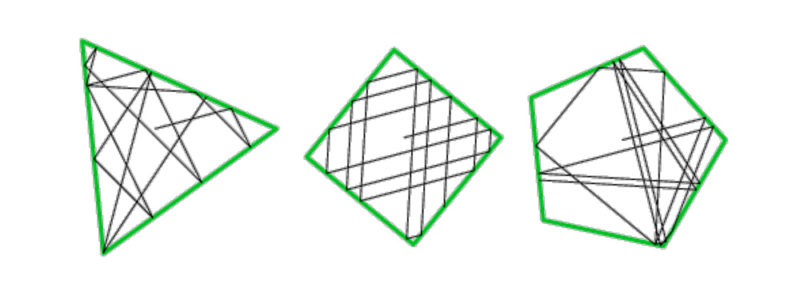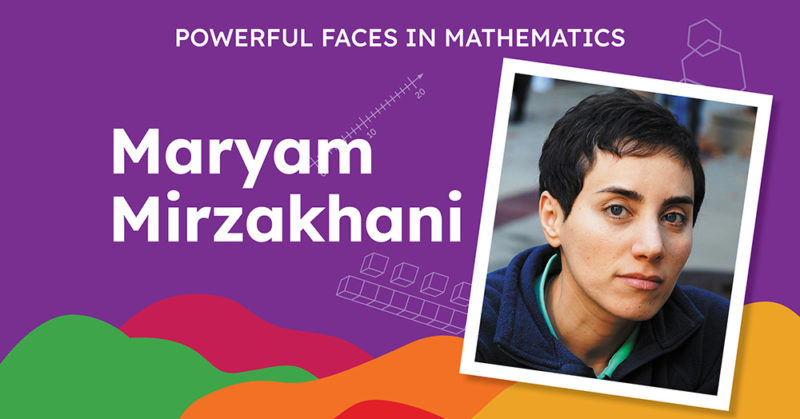Mathematicians
Powerful Faces in Mathematics: Maryam Mirzakhani
This is the third and last post in a series on important women mathematicians in history. Click here to view the first post on Ada Lovelace who is often described as the first computer programmer.
There are a number of reasons to include the late Iranian scholar Maryam Mirzakhani (1977–2017) as the final entry in this blog series.
The first is that she was the only woman to have been awarded the Fields Medal, which is universally regarded as the world’s most prestigious mathematics prize.
The second reason to include Professor Mirzakhani is the importance of the contributions and novelty of the mathematics involved. Her work is in a field of geometry that is currently not part of any school mathematics curriculum. Aspects of this content may be included after time has been spent to develop lessons that are classroom appropriate, but the content is so new that it is far too early to tell. The impact of her work has answered many questions and opened new applications of mathematics.
Without oversimplifying the content, the mathematics is analogous to a billiard ball rolling around a billiard table in the absence of friction. In other words, it doesn’t stop. The mathematics involves the investigation of the path of the ball and the conditions when the ball might or might not eventually repeat the path. This may sound like a somewhat straightforward proposition, but the billiard table does not need to be the traditional rectangle shape! From this point onward, the complexity of the mathematics rises sharply, but the study of geometry involved is still within the grasp of general knowledge. The following quote is an excerpt from the Fields Medal citation for Professor Mirzakhani.

“[Her] work expertly blends dynamics with geometry. Among other things, she studies billiards. But now, in a move very characteristic of modern mathematics, it gets kind of meta (complex)…This isn’t the kind of thing you do to win at pool, but it’s the kind of thing you do to win a Fields Medal. And it’s what you need to do in order to expose the dynamics at the heart of geometry; for there’s no question that they’re there.”1
 The billiard ball situation on a rectangular table is within the realm of Euclidean geometry, the mathematics of 3D objects and 2D shapes that has been taught since the time of ancient Greece when the world was thought to be flat. Today, this traditional concept continues to dominate the geometry taught in schools, when many of the applications require something more than a simple flat-Earth mentality. So, what happens when the ball is rolling around on a curved surface? Much of Professor Mirzakhani’s work is in the field of hyperbolic geometry which her major contributions focused on. In this realm, the rules everyone learned for Euclidean geometry are not the same. For example, many plants grow following the rules of hyperbolic geometry so they can capture a greater amount of sunlight.
The billiard ball situation on a rectangular table is within the realm of Euclidean geometry, the mathematics of 3D objects and 2D shapes that has been taught since the time of ancient Greece when the world was thought to be flat. Today, this traditional concept continues to dominate the geometry taught in schools, when many of the applications require something more than a simple flat-Earth mentality. So, what happens when the ball is rolling around on a curved surface? Much of Professor Mirzakhani’s work is in the field of hyperbolic geometry which her major contributions focused on. In this realm, the rules everyone learned for Euclidean geometry are not the same. For example, many plants grow following the rules of hyperbolic geometry so they can capture a greater amount of sunlight.
The third reason for including Professor Mirzakhaniis the enthusiasm and spirit she exhibited for mathematics, which seemed to be far more than any other mathematician in the past half a century or more. She tragically died at the relatively young age of 40 from breast cancer. The following appeared in Naturemagazine in her memory:
“Despite the fame and attention she received, Mirzakhani remained humble and grounded, always avoiding the spotlight. She listened to the work of other mathematicians with excitement and asked forward-looking questions that hinted at possible new directions. At conferences, she could be found talking with graduate students and Fields medallists alike. She generously shared her ideas with the community and helped others to further their careers.”2
1Ellenberg, Jordan(13 August 2014). “Math is Getting Dynamic.”Retrieved 5 October 2020.
2Naturemagazine (7 September 2017). Retrieved 5 October 2020
Looking for a geometric thinking practice resource?
Consider The Think Tanks Series. This resource is available for Grades 1-6 with four distinct categories to effectively develop mathematical practices and processes:
- Thinking Mathematically and Problem Solving
- Computation and Number Sense
- Measurement and Geometric Thinking
- Reasoning with Fractions
Click on the links below to download sample cards from Grade 5, Measurement and Geometric Thinking.




